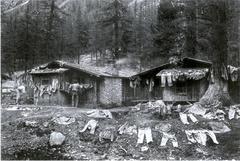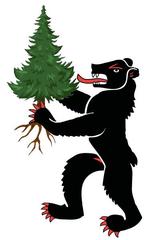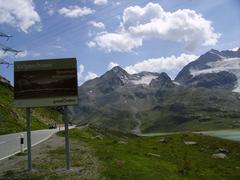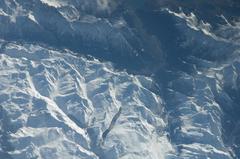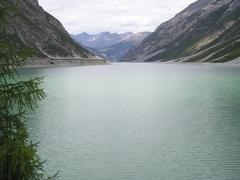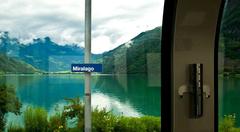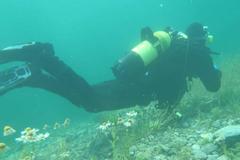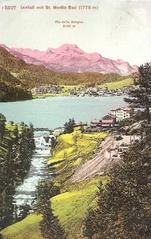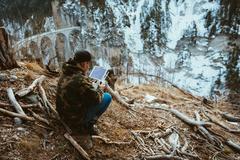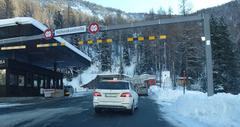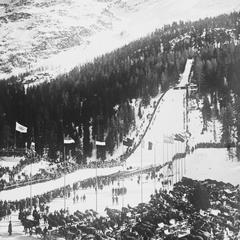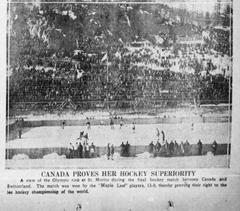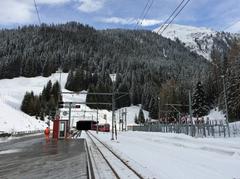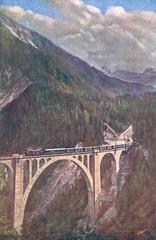
Tschanüff Castle Visiting Hours, Tickets, and Travel Guide – Canton of the Grisons, Switzerland
Date: 04/07/2025
Introduction
Perched atop a dramatic cliff above the village of Ramosch in the Lower Engadine valley, Tschanüff Castle (Burgruine Tschanüff) is one of Switzerland’s most compelling medieval ruins. Originating as early as the 10th century, with significant construction documented in 1256 under Count Meinhard of Tyrol, the castle served as a strategic stronghold controlling pivotal trade and military routes through the Alps. Over centuries, Tschanüff witnessed feudal conflicts, destruction and rebuilding, and the ebb and flow of regional power, making it a powerful symbol of the Engadine’s resilience and cultural heritage.
Today, Tschanüff Castle is the largest and most architecturally significant ruin in the Engadine, attracting history enthusiasts, hikers, and cultural travelers. Visitors can explore its imposing walls, towers, and residential remains, all while enjoying sweeping views of the valley and surrounding Alps. The site is accessible via a picturesque uphill hike from Ramosch, with guided tours available during peak season to enrich the visitor experience.
This guide consolidates Tschanüff’s historical context, architectural highlights, detailed visiting information (hours, tickets, and accessibility), nearby attractions, and practical travel tips. Whether you’re planning a visit or seeking in-depth knowledge about this Swiss heritage site, you’ll find all the essential information here. For further details, consult the Fundaziun Tschanüff, Graubünden Tourism, and the Engadin Tourism portal.
Table of Contents
- Early Origins and Construction
- Feudal Power Struggles and Changing Ownership
- Cycles of Destruction and Restoration
- Architectural Features and Strategic Importance
- Visiting Tschanüff Castle: Hours, Tickets, and Accessibility
- Getting There: Directions and Travel Options
- Nearby Attractions and Travel Tips
- Cultural and Historical Legacy
- Frequently Asked Questions (FAQ)
- Conclusion and Further Resources
Early Origins and Construction
Tschanüff Castle’s site shows evidence of occupation as early as the 10th century, with dendrochronological analysis pointing to timber dating from 957 CE (tschanueff.org). The first documented reference dates to 1256, when Count Meinhard of Görz and Tyrol granted permission to Nannes von Remüs to build the fortress on bishopric land. This established the castle as a fief of the Bishopric of Chur, placing it at the center of regional power struggles (swisscastles.ch).
The castle’s location—west of Ramosch atop a rocky promontory—provided natural defenses and control over vital Alpine routes, enhancing its strategic value for both military and trade purposes (graubuenden.ch).
Feudal Power Struggles and Changing Ownership
Throughout the Middle Ages, Tschanüff’s strategic importance made it a contested prize among local nobility and ecclesiastical authorities. Initially administered by the Lords of Remüs (Ramosch), the castle changed hands multiple times due to feudal disputes and shifting allegiances. Notably, in 1395, a conflict between the Bishop of Chur and the Vogts of Matsch led to a war over its possession, ultimately reaffirming the bishopric’s claim after arbitration in 1421 (swisscastles.ch).
Internal family conflicts also shaped its history, such as the infamous 1367 murder of Conrad von Matsch by his brother Schweiker, which led to further changes in stewardship and deeper entanglement in broader regional politics.
Cycles of Destruction and Restoration
Tschanüff Castle’s turbulent past is reflected in its repeated destruction and reconstruction:
- Early Devastations: The castle suffered multiple attacks and damages during feudal wars, each time being rebuilt due to its strategic necessity (tschanueff.org).
- Remüser Burgenbruch (1565): Local peasants, rebelling against feudal dues, stormed and burned the castle. Restoration was mandated by the regional parliament (swisscastles.ch).
- Bündner Wirren (1622): During the religious and political conflicts of the Grisons Troubles, the castle was burned again by Glarner troops. Although repaired, it never regained its former might (bein-numismatics.ch).
- Decline and Preservation: By 1780, fears of landslides led to the castle’s abandonment. It later passed into private hands before the Fundaziun Tschanüff was established in 2001 to preserve the site (tschanueff.org).
Architectural Features and Strategic Importance
Tschanüff Castle is noted for its massive curtain walls, towers, and well-preserved residential and defensive structures. Its prominent bergfried (keep) features walls over two meters thick and rises several stories above the central courtyard. The ring wall and bastions reflect evolving defensive needs, particularly against firearms. Residual living quarters, service areas, and gatehouses provide a glimpse into medieval daily life (graubuenden.ch).
The castle’s location, in concert with nearby fortresses like Steinsberg and Tarasp, formed a network controlling the Lower Engadine’s key routes to Lombardy, vital for trade and military endeavors (tschanueff.org).
Visiting Tschanüff Castle: Hours, Tickets, and Accessibility
- Visiting Hours: Tschanüff Castle is accessible year-round as an open-air ruin. There are no entry gates or fixed hours, but visits are safest and most enjoyable during daylight (typically 9:00 AM–6:00 PM in peak season).
- Tickets: Entry is free. Guided tours may be available during high season (May–October) and can be arranged through local tourist offices or the Fundaziun Tschanüff.
- Accessibility: The site is not wheelchair accessible due to steep and uneven terrain. The approach involves a 20–30 minute uphill hike from Ramosch. Sturdy footwear is essential.
- Facilities: There are no restrooms or shops at the castle. Amenities are available in Ramosch village.
- Safety: Exercise caution—walls and drops are unguarded, and weather can change rapidly.
Getting There: Directions and Travel Options
- By Public Transport: Take the train to Scuol, then a PostBus to Ramosch. From the village, follow marked hiking trails uphill to the castle (20–30 minutes).
- By Car: Park in village-designated parking areas; the castle is accessible only on foot from Ramosch.
- By Foot or Bike: Well-marked trails make Tschanüff a popular stop for hikers and mountain bikers.
Nearby Attractions and Travel Tips
- Village of Ramosch: Explore traditional Engadine architecture and the Reformed Church of St. Florinus.
- Additional Castles: Steinsberg and Tarasp castles are within easy reach for history buffs.
- Outdoor Activities: The Engadine valley offers hiking, cycling, and adventure parks such as the Sur En Rope Park.
- Photography: Early morning and late afternoon offer the best light for panoramic shots.
- Best Season: Late spring to early autumn provides favorable weather and vibrant wildflowers.
Cultural and Historical Legacy
Tschanüff Castle embodies the resilience and cultural heritage of the Lower Engadine. Its repeated destruction and rebuilding mirror the region’s tumultuous political past, while its architecture and preservation efforts stand as a testament to Graubünden’s enduring identity. Today, Tschanüff is recognized as a monument of national significance, maintained by community-supported initiatives (bein-numismatics.ch).
Frequently Asked Questions (FAQ)
Q: What are the castle’s opening hours?
A: Open year-round as an ungated ruin; visit during daylight hours for safety.
Q: Are tickets required?
A: No, entry is free. Guided tours may require advance booking and a small fee.
Q: Is the castle accessible by public transport?
A: Yes; take the train to Scuol, then a PostBus to Ramosch, followed by a short hike.
Q: Are guided tours available?
A: Available by arrangement during high season; check with Fundaziun Tschanüff or local tourist offices.
Q: Is the site wheelchair accessible?
A: No, the terrain is steep and uneven.
Q: Can I bring my dog?
A: Yes, but dogs must be kept on a leash.
Conclusion and Further Resources
Tschanüff Castle is a must-visit for anyone interested in Swiss medieval heritage, offering free access, breathtaking views, and a rich historical narrative. Plan your visit during the mild months, explore the surrounding Engadine, and consider a guided tour for in-depth insights. For more information, explore the official resources below, and download the Audiala app for audio guides and event updates.
References and Official Links
- Fundaziun Tschanüff – History and Preservation
- Swiss Castles – Tschanüff Castle Guide
- Graubünden Tourism – Tschanüff Castle
- Ramosch Tourism – Visitor Information
- Bein Numismatics – Historical Context










